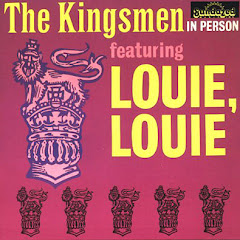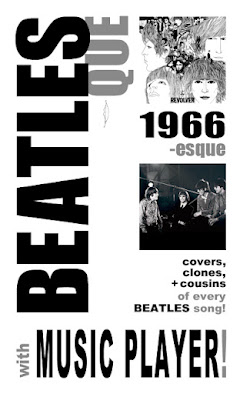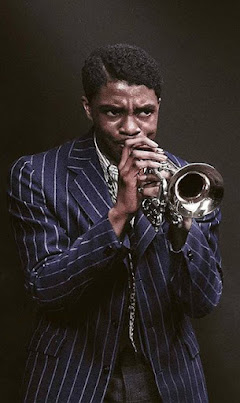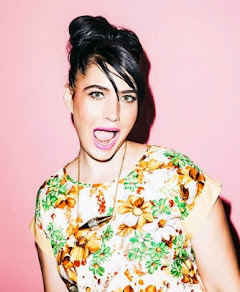Shortcut links:
> Best Graphic Novel
> Best Comics
> > "Altered IMAGE"
> > "MULTIVERSITY"
> > "MIRACLEMAN"
> > "STAR WARS Reawakens"
> Best Graphic Novels
> Best Collections/ Reissues
> Best Movies And TV
> Best Webcomics
> Rest In Power
B E S T
G R A P H I C
N O V E L :
-MIRACLEMAN, Book 3: OLYMPUS, by Alan Moore and John Totleben (Marvel)
OLYMPUS is an essential text, perhaps the ultimate statement on how far superheroism can -or should- go.
And it inspired everything for the last three decades.
Learn more below.
B E S T
C O M I C S :
I M A G E
-SAGA, by Fiona Staples and Brian K. Vaughan ⇧
Space Fantasy more genre-bending and heart-rending as any made.
-PAPER GIRLS, by Cliff Chiang and Brian K. Vaughan
As if SAGA wasn't brilliant enough, this heady and complex series joins it in pure quality.
Puzzle out the surreal misadventures of four girls from 1988 overlapped through time and space.
I M A G E
In the 1990s, Image Comics was the cancer of comics.
In the 2010s, it is the antitoxin saving them.
In 1992, Image was everything wrong about comics.
A comics renaissance had exploded through the indie publishers in the early-'80s, bringing a new maturity and mastery to the medium. DC quickly grabbed many of those creators and rode the quality wave through the decade. But meanwhile Marvel was adrift, coasting on ghosts of itself with a raft of hack artists on steroids. Perversely, and tragically, this stuff actually sold really well to the rote crowd who lacked quality control.
'cause you're so wack."
-Beastie Boys, 1992
The seven artists jumped ship and created Image Comics in 1992, co-opting the momentum of the quality wave with their bilge: amateur figures, spastic hatching, swiped concepts, thug writing, and endless splash pages were bad enough, but their tidal wave of teen-aggro violence was completely toxic.
And yet it sold, in bigger amounts than were even conceivable. While the real revolution was cresting down, these froth dogs made bank. And then squandered it in egos, in-fighting, blown deadlines, and the resultant backlash. But the damage was done; the infantile aggro-virus lateralized to infect like-minded publishers, and ultimately has infected the leadership of one of the two majors for the last few years.
In 2015, Image is everything best about comics.
Due to the recent leadership of Eric Stephenson, Image has now come full-circle to what it should have been in the first place: an indie haven for the best talent to continue the renaissance with first-quality creator-owned series. They have gone from being the worst comics company to the best, even in a era of excellent work from all competitors. It's like seeing Darth redeem.
Here's just a sample of the fine work that they are producing...
-MONSTRESS, by Marjorie Liu and Sana Takeda _______
Goth of Thrones.
-THE AUTUMNLANDS, by Kurt Busiek, Benjamin Dewey, and Jordie Bellaire _______
Smart and layered political Fantasy.
-THE WICKED AND THE DIVINE, by Kieron Gillen and Jamie McKelvie _______
Tune Gods, Turn Rockstar, Burn Out.
-ODY-C, by Matt Fraction and Christian Ward _______
A female overwrite of THE ODYSSEY as a pyschedelic SciFi epic.
-DESCENDER, by Jeff Lemire and Dustin Nguyen _______
Robot lives matter.
-SHUTTER, by Joe Keatinge and Leila Del Duca _______
Venture into alternate adventuring.
-INVISIBLE REPUBLIC, by Corinna Bechko and Gabriel Hardman _______
Galactic regime change.
-BLACK SCIENCE, by Rick Remender, Matteo Scalera, and Dean White _______
Cross-dimensional interstices.
-SEX CRIMINALS, by Matt Fraction and Chip Zdarsky ⇧ _______
Sex Positive, sarcastic, sacrilegious, sappy, surprising, slapstick.
-MATERIAL, by Ales Kot and Will Tempest _______
The personal is political, and also metaphysical, in this anthology approach to modern life.
-ROCKET GIRL, by Amy Reeder and Brandon Montclare _______
Catch her quick, because her cameos are elusive.
-THE FADE-OUT, by Ed Brubaker and Sean Phillips _______
A hardboiled mini-series by the crime stalwarts.
-SOUTHERN CROSS, by Becky Cloonan and Andy Belanger _______
Creepy mystery on a cosmic scale
-COPPERHEAD, by Jay Faerber and Scott Godlewski _______
A backwater world's sheriff, and her battles to survive the plain.
-LAZARUS, by Greg Rucka And Michael Lark _______
Surviving dystopian political struggles and family betrayals.
D C
Earth 23, art: Gene Ha
-MULTIVERSITY, by Grant Morrison, with Frank Quitely, Chris Sprouse, Cameron Stewart, etc. ⇧
Saved The Universe. -
In 1987, the Scottish scribe sparked his career with the series ZENITH for 2000 AD magazine, a punk rewrite of the DC multiverse and its cosmic crises. DC Comics had just collapsed all of its alternate universes into one with their CRISIS ON INFINITE EARTHS maxi-series (1986). But the attempt to streamline the line lost much of the diverse magic for fans by throwing the history under the bus. ZENITH was the first salvo by a Silver Age fan to put it right.
He continued to write that ever better ever since. Making his name at DC in the '90s, Morrison went against the company mandate in a stealth campaign to resurrect the DC multiverse. You can follow the pattern through ANIMAL MAN (1988), FLEX MENTALLO (1995), and JLA: Earth 2 (2000); the cumulative affect of this convinced DC to return the Multiverse in their INFINITE CRISIS event (2005), and Morrison refined this through the sequels 52 (2006) and FINAL CRISIS (2008).
His ultimate intent was to restore/revamp the new 52-world Multiverse and, after a crisis of infinite delays, did so this year with 9 one-shots, each focusing on unique angles of the new/old cosmology; Classics like the Marvel Family get revitalized, the 'Dark' trend in comics is symbolically rejected, and Morrison even satirizes WATCHMEN with their original Charleton Comics sources. (Ironically, Grant's deathless grudge against Alan Moore challenged him here to create one of the most focused and innovative works he's ever made.) Clever stories, a roster of fine guest artists, and a thoroughly wondrous Guidebook of the new/old worlds make this especially satisfying book a crucial classic.
-PREZ, by Mark Russell, Ben Caldwell, and Dominike Stanton ⇧
In 1973, classic Golden Age writer Joe Simon -with artist Jerry Grandenetti- gave an unexpected voice to the counterculture with PREZ, a rollicking social satire comic starring the first 18-year-old President of the United States. With admirable wit, it took on political corruption, corporate interests, and media sensationalism. Naturally, it didn't last as long as it should, but had a seismic influence across time, with callbacks from THE DARK KNIGHT RETURNS to THE SANDMAN.
This new reboot about the first teen/female Prez is critical, both in outlook and timing. The relentless satire of political cowards, corporate tyranny, and social media idiocy is precisely as hilarious and cutting as we need in the fight against Regression, and a perfect successor to the original.
Hell Yeah to the Chief!
M A R V E L
-MIRACLEMAN #14-16, by Alan Moore and John Totleben
-MIRACLEMAN: The Golden Age #1-3, by Neil Gaiman and Mark Buckingham ⇧
M I R A C L E M A N
MIRACLEMAN revolutionized the entire comics industry.
And then did it again.
It is the source of most everything you love in mature comics, but most folks don't know that... because here's what went wrong.
In 1982, writer Alan Moore made his seismic debut turning MARVELMAN, a '50s British clone of Captain Marvel, from kid fun into the first truly adult superhero. The mature complexity that Moore brought to the postmodern prometheus, with artists Garry Leach and Alan Davis, completely challenged and upended comics' conventions, and escalated the '80s adult comics renaissance. Becoming a supernova at DC by 1985, Alan expanded this with an ambitious second arc of the hero, who by now was renamed as MIRACLEMAN. But it was the third arc that ignited revolution again.
WATCHMEN (1986) had laced themes of how superbeings may actually be a detriment to social progress as much as a deliverance. Moore brought his ideas to higher fruition afterward in the third arc of MIRACLEMAN, a six-issue span called "Olympus" (1987-'89).
Elevated by the impossible architectures, epic layouts, and obsessive Virgil Finlay-esque detail of artist John Totleben, he unleashed the real impact of supergods on society, from the horror of unchecked hyperviolence, to the interior crisis of human frailty, to the subtler dangers of benign fascism. Free of any constrictions and on fire with advanced ideas, "Olympus" was like an Oxford post-grad thesis that made all other superhero comics on the market look like they were permanently stuck in Junior High. (Most were. Many still are.)
Alan ended on that high note and quietly bowed out of comics for awhile, handing the series to his hand-picked successors in 1990, two talanted neophytes named Neil Gaiman and Mark Buckingham.
Gaiman complemented Moore's macro approach by dealing in the micro, the social repercussions of "Olympus" on different people. Planning to do three story arcs of their own, the duo had finished the first one -"The Golden Age"- and started the second when disaster struck.
Imagine if The Beatles had done all their revolutions in the '60s, but it was then erased in 1970 from public memory for 25 years; and that all the following music people enjoyed was actually a reflection of a phenomenon they were unaware had occurred. This is what happened to MIRACLEMAN.
Essential 1980s classics written by Alan Moore like SWAMP THING, WATCHMEN, THE KILLING JOKE, and V FOR VENDETTA all enjoyed the publishing support of DC's parent, Time-Warner, keeping them clearly visible in all bookstores, comic stores, and libraries with a wave of graphic novel/trade paperbacks. But MIRACLEMAN came from the indie publisher Eclipse Comics, off the radar of many fans. Hampered by continuous publication gaps from backstage delays, the series was pulled under when Eclipse went belly-up with bankruptcy.
For over two decades, MIRACLEMAN has been out-of-print because of a maelstrom of legal chicanery. (Looking at you, Todd.>)
Nevertheless, MIRACLEMAN was the gift that kept getting taken. Creators great or awful reflected all of its innovations, core themes, and wrenching events during the last 25 years without many fans recognizing the absent source.
Here are only a few of countless examples.:
- Its optimism and olympian godhood, coupled with the effects on human society, was extended in MARVELS, KINGDOM COME, ASTRO CITY, and THE NEW FRONTIER.
- Its themes thread Grant Morrison's career, from ZENITH to ALL-STAR SUPERMAN.
- The conscience and legacy of the messianic superman also reflects in series like SUPREME, SUPERMAN: Red Son, INVINCIBLE, and JUPITER'S CHILDREN; and films like UNBREAKABLE, SUPERMAN RETURNS, and HANCOCK.
- The general gravity of godbeings on humanity continue in series like PLANETARY, THE AUTHORITY, TOP 10, and BLACK HAMMER.
- "Olympus" has the most heinous villain ever known. His actions have been swiped ever since, for far lesser effect, from the idiot ultraviolence of early Image Comics to DC's use of Black Adam in the WWIII event series.
- The movies have also borrowed out from that crucial finale showdown, from THE MATRIX REVOLUTIONS to MAN OF STEEL and BATMAN v. SUPERMAN.
- Miraclewoman is the exact template for Carol Danvers' emergence as Captain Marvel.
But, finally, this cultural amnesia has been corrected.
Now Marvel Comics has rectified the grievous error of his absence by reprinting the MIRACLEMAN series, with remastered art, new color and lettering, and all-star covers. MIRACLEMAN #14-16 culminated Alan Moore's run with the latter half of "Olympus" this year, followed by Gaiman and Buckingham's "The Golden Age" arc. (Now it remains for that duo to at last create and release their final two arcs.)
All three of Moore's arcs are now in hardback volumes:
- Book 1: A Dream Of Flying
- Book 2: The Red King Gambit
- Book 3: Olympus
May miracles never cease.
-SPIDER-GWEN, by Jason Latour and Robbi Rodriguez ⇧ _______
The two best concepts in Spider-Man since 1973 are Miles Morales and the alternate Gwen Stacy. Get into the swing of why.
-THE UNBEATABLE SQUIRREL GIRL (Vol. 1 and 2), by Ryan North and Erica Henderson ⇧ _______
Marvel's most chipper and dale superhero is all charm and no harm in this hilarious series.
-MS. MARVEL, by G. Willow Wilson, Adrian Alphona, Takeshi Miyazawa, and Ian Herring _______
New Jersey's finest, Ms. Kamala Khan.
-THOR, by Jason Aaron And Russell Dauterman _______
She who is the most worthy possesses the power.
-BLACK WIDOW, by Nathan Edmondson and Phil Noto _______
Ludlum wiles with graphic style.
-HOWARD THE DUCK, by Chip Zdarsky and Joe Quinones _______
The artist of SEX CRIMINALS proves just as worthy a scribe with this admirable return of the foul-mouthed fowl.
-SILVER SURFER, by Dan Slott, Michael Allred, and Laura Allred _______
Cresting on that Lee/Kirby magic.
-WEIRDWORLD, by Jason Aaron and Mike Del Mundo _______
A crisis of infinite Fantasy characters, with dazzling art.
S T A R
W A R S
R e a w a k e n s
STAR WARS is having three renaissances right now: on the screen, on television, and on the page.
The spirit of the original trilogy is all-pervasive now: STAR WARS: The Force Awakens vivified the theaters, STAR WARS: Rebels reanimated animation, and Marvel's superior Star Wars comics revitalized the page.
When Marvel Comics adapted STAR WARS in 1977, the cash bonanza literally saved the company. But they were operating for the next nine years of the series with three disadvantages: the monthly grind wore out creative teams; the creators were more versed in the Marvel Method than being faithful; and their stories were guessing wild in the three years between films.
Now that has changed completely: Marvel phases rotating art teams around short, planned-out story arcs by singular writers; the writers and artists are lifelong SW fans riveted over every detail; and they all now know the first six films inside out. (It should be noted that Dark Horse also did many fine series with the franchise in the '90s and '00s.)
The result is that Marvel is crafting first-rate stories that look and read like movies between the movies. They capture the framing, the lighting, the pace, the dialogue, the sharp details. But most importantly, they match the quality of the films with stories that reveal the surprising events and motivations between each movie.
Presently, they are telling the three years between 'A NEW HOPE' and 'THE EMPIRE STRIKES BACK' in two titles that happen concurrently, the Rebel side of events with STAR WARS and the Imperial side with DARTH VADER.
-STAR WARS, by Jason Aaron and John Cassaday ⇧
This series captures all of the repartee of the lead trio -Luke, Leia, and Han- amid all the gallavanting and dive-bombing. Along the way it weaves in elements of the total narrative while clearing up unresolved continuity mysteries.
-DARTH VADER, by Kieron Gillen and Salvador Larroca ⇧
Running parallel to it, this series does the amazing feat of tying together the totality of Vader. With almost zen elegance it creates a complex composite of his younger self resonant within the emergent Sith Lord, and his motivations for the future because of, all by implication and subtlety. Here, silences speak volumes. If the companion comic's 'movie' seems directed by Whedon, this one would be by Kurasawa.
Vader is abetted by two genuinely unnerving death droids and by Dr. Aphra, a young woman reflecting Leia and Han at their least ethical, a breakout character just as valuable as Rey in the new films.
There are also excellent supplementary mini-series and one-shots, including these standouts.:
-STAR WARS: Princess Leia, by Mark Waid, Terry Dodson, and Rachel Dodson _______
A nouvue-esque escapade that quietly ties Leia to her mother.
-STAR WARS: Lando, by Charles Soule and Alex Maleev _______
The best heist story with Lando Calrissian you could ever hope to be filmed.
V E R T I G O
-ASTRO CITY, by Kurt Busiek and Brent Anderson, + Alex Ross ⇧ _______
The great thing about KINGDOM COME is that it kept going, albiet in the sideways alternate dimension of this great series.
-THE UNWRITTEN Apocalypse, by Mike Carey and Peter Gross _______
The sequel maxi-series reaches its conclusion.
B O O M
-GIANT DAYS, by John Allison and Lissa Treiman _______
Three college mates and life.
-LUMBERJANES, by Various _______
Earns its merit badge every time.
A D H O U S E
-POPE HATS #4, by Ethan Rilly _______
Short incisive tales of daily lives.>
A V A T A R
-PROVIDENCE #1-6, by Alan Moore, Jacen Burrows, and Juan Rodriguez _______
Alan Moore's prequel series to his NEONOMICON graphic novel, a dissection and refraction of Lovecraft's Cthulhu mythos.
B E S T
G R A P H I C
N O V E L S :
-MARCH Book Two, by John Lewis, Andrew Aydin, and Nate Powell (Top Shelf) ⇧
The second volume of Congressman John Lewis' storied history in the Civil Rights Movement.
Required reading in all times.
-THE SANDMAN: Overture, by Neil Gaiman and JH Williams III (Vertigo) ⇧
A timeless classic and essential read, THE SANDMAN series (1989-1996) launched Neil Gaiman, brought literary acclaim to comics from the mainstream, and jolted countless misfit dreams beyond boundaries.
High goals to match, but this astounding new prequel is exalted by the peerless art of J.H. Williams III (Promethea, Batwoman), who continually pushes the boundaries of layout, panel shapes, mixed styles, and graphics better and farther than anyone else.
-NEMO: River of Ghosts, by Alan Moore and Kevin O'Neill (Top Shelf) _______
The third volume in a trilogy focusing on Janni Dakkar, the daughter of Nemo from THE LEAGUE OF EXTRAORDINARY GENTLEMEN.
-GHETTO BROTHER: Warrior to Peacemaker, by Julian Voloj and Claudia Ahlering (NBM) _______
The true story of a Bronx gangleader turned peacemaker.
-NANJING: The Burning City, by Ethan Young (Dark Horse) _______
Survival on all levels amidst the ruin of war.
-THE DIVINE, by Asaf Hanuka, Tomer Hanuka, and Boaz Lavie (First Second Books, Dargaud) _______
APOCALYPSE NOW meets Lord Of The Flies by way of UGETSU. Lyrical, unnsettling.
-SPACE DUMPLINS, by Craig Thompson (Scholastic) _______
After BLANKETS and HABIBI, Thompson is still just as epic while now having some great fun with this space girl's adventures.
-APOCALYPTIGIRL, by Andrew MacLean (Dark Horse) _______
Adroit twist on surviving dystopia, with marvelous clean-line art.
-STEP ASIDE, POPS, by Kate Beaton (Drawn & Quarterly) _______
Beaton follows up the lauded HARK, A VAGRANT with more snark and snap.
-HIPHOP FAMILY TREE, VOL. 3: 1983-1984, by Ed Piskor (Fantagraphics) _______
Piskor keeps extollin' with the rhythm rhyme rollin'.
-UNFLATTENING, by Nick Sousanis (Harvard Press) ⇧ _______
A metaphysical parallel to McCloud's UNDERSTANDING COMICS.
Sousanis argues that perception is best expanded by multiple views, and proves it using a questing narrative of visual collages to open up multi-dimensional thinking.>
-GIRL IN DIOR, by Annie Goetzinger (NBM) _______
Annie Goetzinger got her start in the her-etical AH! NANA magazine, and she's still kicking your butts today.
-SAM ZABEL AND HIS MAGIC PEN, by Dylan Horrocks (Fantagraphics) _______
A semi-autobiographical meditation on escaping writers block through fantasy and reflection.
-SACRED HEART, by Liz Suburbia (Fantagraphics) _______
Teens in a town and the unwinding mystery of something very off.
Check out the webcomic!
-WUVABLE OAF, by Ed Luce (Fantagraphics) ⇧ _______
This fun book about a lonely wrestler's quest for love is the bear hug you deserve.>
-SOPPY: A Love Story, by Philippa Rice (Dark Horse) _______
All the goofball little pleasures of love in cartoon moments.
-KILLING AND DYING, by Adrian Tomine (Drawn & Quarterly) _______
Quietly, Tomine is making the best indie character movies on the page, one fine book at a time.
-THE SCULPTOR, by Scott McCloud (First Second) _______
He showed you how to understand/make/reinvent comics, and now he does all three to prove it.
B E S T
C O L L E C T I O N S /
R E I S S U E S :
-MIRACLEMAN Artifact Edition, by Alan Moore, Garry Leach, Alan Davis, and John Totleben (IDW) ⇧
Did I tell you already that MIRACLEMAN is the best thing ever? Oh yeah, that's right.
Here's more proof: this new testament to the legendary art of Leach, Davis, and the astonishing Totleben compiles the actual art pages photographed at their full size.
-ZENITH: Phase 3; and Phase 4, by Grant Morrison and Steve Yeowell (2000 AD) _______
In 1989, Alan Moore picked Neil Gaiman over Grant Morrison to take over MIRACLEMAN. Grant grudged ever since. But they all did great work going forward and we all won, so bygones begone, move on.
Grant's ZENITH series, essentially his parallel of MIRACLEMAN, finally gets a deluxe 4-volume reprinting here. Enjoy the mindtrip as Grant wraps up his first Multiversal crisis (see DC spiel above).
-WONDER WOMAN: The War Years 1941-1945, by William Moulton Marston and H.G. Peter (IDW) _______
Marston's feminist tales and Peter's art nouveau cartooning are required reading for any serious comic fan or activist.
-ALEX RAYMOND: An Artistic Journey Adventure Intrigue & Romance, by Ron Goulart (IDW) _______
Raymond brought the elegant sophisication of the Golden Age of Illustration (see: Franklin Booth, Joseph Clement Coll, Charles D. Gibson) to the comic strip page with his brilliant penwork for the Flash Gordon strip.
-WILL EISNER'S THE SPIRIT: Artist's Edition, Volume 2, by Will Eisner (IDW) ⇧ _______
"The CITIZEN KANE of comics" proves its acclaim with this volume of real art pages photographed at actual size.
-THE SPIRIT: A Celebration of 75 Years, by Will Eisner; plus Wally Wood, Neil Gaiman, Alan Moore, Eddie Campbell, and Darwyn Cooke (DC) _______
With his Sunday newspaper series "The Spirit", Will Eisner invented and lifted the vocabulary of comics for everyone to follow after.
-SHOWA: A History of Japan 1953-1989, by Shigeru Mizuki (Drawn & Quarterly) _______
Mizuki's autobio' series reaches fruition spanning his war service to his rise as a Manga innovator.
-WALLY WOOD EC Comics Artisan Edition, by Wally Wood (IDW) _______
EC Comics was the adult revolution of comics in the '50s, and Wood was one of its finest artisans.
-THE EC ARCHIVES: The Haunt of Fear, The Vault of Horror, Shock SuspenStories, Tales From The Crypt, Weird Fantasy, Weird Science, Two-Fisted Tales, Panic, by various (Dark Horse) ⇧ _______
EC Comics was so far ahead of the curve that in 1954 the repressive politicians wiped it out of existence.>
Flip them off as you read these marvelously reprinted tales that blueprinted all horror, fantasy, space opera, and satire to come.
-CREEPY Presents Alex Toth, by Alex Toth (Dark Horse) _______
A spiritual successor to EC, Warren Publications mags like CREEPY and EERIE were an escape forum for innovators like Alex Toth.
-The 6 Voyages of Lone Sloane, Vol. 1, by Philippe Druillet (Titan Comics) ⇧ _______
These hallucinatory epics from 1971 grafted Kirby cosmic spectacle and infinite cathedral architectures to Moorcock acid journeys. Still as stunning as ever.
-The 6 Voyages of Lone Sloane, Vol. 2, by Philippe Druillet (Titan Comics) _______
Following the noteriety of this series, Philippe Druillet teamed with Inki Bilal and Moebius to found METAL HURLANT, a French adult fantasy art magazine that was reprinted in the USA as HEAVY METAL.
-JEFFREY JONES: Idyll / I'm Age, by Jeffrey Jones (Grant) ⇧ _______
This volume finally compiles "I'm Age", the sorely unsung illustrator Jeffrey Catherine Jones' monthly page for HEAVY METAL. Poetic pen and ink meditations.
-THE ROCKETEER: The Complete Adventures, by Dave Stevens (IDW) _______
Dave Stevens made a timeless character with ageless grace, and you're lucky enough to bask in it.
-NIMONA, by Noelle Stevenson (HarperCollins) _______
Stevenson's early webcomic before she wrote LUMBERJANES, a quirky fantasy with a lot of heart.>
-MELODY: Story of a Nude Dancer, by Sylvie Rancourt (Drawn & Quarterly) _______
An artist who lived the life and tells the tale, these unassuming stories strip away all preconceptions with honesty and warmth.
WHERE WE COME FROM, Dept.
Explore the past to map the future.
Get with, get going.
-THE SECRET HISTORY OF WONDER WOMAN, by Jill Lepore (Vintage) ⇧
It's become fashionable to speculate on the polyamory of William Marston's private life, but this book focuses on what really matters.
With new scholarship, Lepore -a history professor from Harvard- uncovers how deeply rooted the creators of Wonder Woman -writer Marston (and partners Elizabeth Holloway and Olive Byrne) and artist H.G. Peter- were into the original Feminist movement, by marriage, outlook, and output.
The real truth is that Wonder Woman is the direct distillation of all Feminist hopes in pure form to inspire the children of the future.
-THE BRONZE AGE OF DC COMICS, by Paul Levitz (Taschen)
The naming of the eras of comics -the Golden Age (the '30s/'40s), the Silver Age (the '50s/'60s), and the Bronze Age (the '70s/'80s)- gives the impression that the medium devalues with time.
In truth, it's the exact opposite. Each era only increases in exponential sophistication, and the 1970s are where the comics medium first came into adulthood. From 'the New Relevancy' on up, it is a revolution of outlook and craft, which was mirrored and amplified in the '80s.
The diversity, skill, and prestige of current comics and graphic novels exists primarily because of this era's bold innovations.
B E S T
M O V I E S
a n d
T V :
I write and illustrate reviews of all comics-sourced films at the Four Color Films site.
art by Tym Stevens
-THE DIARY OF A TEENAGE GIRL
> Four Color Films review
-AVENGERS 2: AGE OF ULTRON
> Four Color Films review
-ANT-MAN
> Four Color Films review
-DAREDEVIL, Season 1
-JESSICA JONES, Season 2
-AGENT CARTER, Season 1
See also:
> BEST MOVIES & TV: 2015
B E S T
W E B C O M I C S
- The Nib
- Strong Female Protagonist
R E S T
I N
P O W E R
pencils Curt Swan, inks Murphy Anderson
- Herb Trimpe
- Murphy Anderson
From you, we exist.
Because of you, we persist.
© Tym Stevens
See also:
• BEST MOVIES + TV: 2024
• BEST MUSIC: 2024
• BEST COMICS: 2024
· BEST MOVIES + TV: 2023
• BEST MUSIC: 2023
• BEST COMICS: 2023
• BEST MOVIES + TV: 2022
• BEST MUSIC: 2022
• BEST COMICS: 2022
• BEST MOVIES + TV: 2021
• BEST MUSIC: 2021
• BEST COMICS: 2021
• BEST MOVIES + TV: 2020
• BEST MUSIC: 2020
• BEST COMICS: 2020
• BEST MOVIES + TV: 2019
• BEST MUSIC: 2019
• BEST COMICS: 2019
• BEST MOVIES + TV: 2018
• BEST MUSIC: 2018
• BEST COMICS: 2018
• BEST MOVIES + TV: 2017
• BEST MUSIC: 2017
• BEST COMICS: 2017
• BEST MOVIES + TV: 2016
• BEST MUSIC: 2016
• BEST COMICS: 2016
• BEST MOVIES + TV: 2015
• BEST MUSIC: 2015
• BEST MOVIES + TV: 2014
• BEST MUSIC: 2014
• BEST COMICS: 2014
• BEST MOVIES + TV: 2013
• BEST MUSIC: 2013
• BEST COMICS: 2013
• BEST MOVIES + TV: 2012
• BEST MUSIC: 2012
• BEST COMICS: 2012
• BEST MOVIES + TV: 2011
• BEST MUSIC: 2011
• BEST COMICS: 2011
• BEST MOVIES + TV: 2000-2010
• BEST MUSIC: 2000-2010
• BEST COMICS: 2000-2010
• How STAR WARS Is Changing Everything!
• 2001: A SPACE ODYSSEY - Its Transcendent Influence on all Pop Culture, with Music Player!
• How SPAGHETTI WESTERNS Revolutionized Rock Music!, with 3 Music Players!
• TWIN PEAKS: Its Influence on 30 Years of Film, TV, and Music!, with 5 Music Players!
• The Real History of ROCK AND SOUL!: The Music Player Checklist
• THE CANON 1: 50 Books That Created Modern Culture, with Music Player
• THE CANON 2: 50 More Books That Created Modern Pop Culture, with Music Player
• THE CANON 3: 50 Recent Books That Created Modern Culture, with Music Player






























































































































































No comments:
Post a Comment